

A pilot program for Chinese medicinal resources survey has been implemented, forming a dynamic information and technology system with one central platform, 28 provincial-level centers, and 65 monitoring stations. Sixteen seed and seedling bases for Chinese medicinal plants and two germplasm banks have been established. Organizational work has been done for collation of literature and screening of appropriate skills of ethnic minority medicine, involving 150 works on ethnic minority medicine and 140 appropriate skills. The transformation and application of these research results has provided support for enhancing clinical effectiveness, ensuring the quality of Chinese medicine, and fostering the sound development of the TCM pharmaceutical industry.
Rapid development of the TCM pharmaceutical industry. A number of laws and regulations have been enacted and implemented on strengthening the protection of TCM wild medicinal resources; a number of national and local nature reserves have been established; research has been conducted on the protection of rare and endangered Chinese medicinal resources; and artificial production or wild tending have been carried out for certain scarce and endangered resources.
A registration management system has been basically established for TCM pharmaceuticals under the guidance of theories of traditional Chinese medicine and pharmacology, highlighting the strengths of TCM, setting great store by clinical practice and encouraging innovation. To date, 60,000 TCM and ethnic minority medical drugs have been approved, and 2,088 pharmaceutical enterprises that have been approved by the Good Manufacturing Practice (GMP) of Medical Products are manufacturing Chinese patent medicines. The dosage forms of TCM medicines have increased from a traditionally limited number of forms such as pills, powders, ointments and pellets into more than 40, including dropping pills, tablets, pods and capsules, indicating marked improvement in the technological level of Chinese medicinal drug production, and initial establishment of a modern Chinese medicine industry based on the production of medicinal materials and industrial production and tied together by commerce.
In 2015, the total output value of the TCM pharmaceutical industry was RMB786.6 billion, accounting for 28.55 percent of the total generated by the country's pharmaceutical industry, and becoming a new source of growth in China's economy. Planting Chinese medicinal herbs has become a key means of adjusting the rural industrial structure, improving the eco-environment, and increasing farmers' incomes. Trade in Chinese medicinal products has maintained rapid growth, and the export value of Chinese medicines amounted to US$3.72 billion in 2015, signifying the great potential of Chinese medicines in overseas markets. The TCM pharmaceutical industry has gradually developed into an industry with distinctive strengths and broad market prospects, which is of strategic importance to national economic and social development.
New progress in TCM culture. The Chinese government treasures and protects the cultural value of TCM, and endeavors to build a system for passing on the traditional culture of TCM. In total, 130 TCM elements have been incorporated into the Representative List of National Intangible Cultural Heritage, with TCM acupuncture and moxibustion being included in the Representative List of the Intangible Cultural Heritage of Humanity by UNESCO, and the Huang Di Nei Jing (Yellow Emperor's Inner Canon) and Ben Cao Gang Mu (Compendium of Materia Medica) are listed in the Memory of the World Register. Efforts have been reinforced to promote public awareness in TCM healthcare, including events under the campaign of Traditional Chinese Medicine Across China. Public talks have been organized through media and TCM education bases popularizing basic knowledge and skills of TCM healthcare and prevention and treatment of illnesses. In this way, public awareness of and ability to practice TCM healthcare has been enhanced, and general public health has improved.
Positive progress in TCM standardization. The Outline of the Medium- and Long-term Development Plan for the Standardization of Traditional Chinese Medicine (2011-2020) has been issued and implemented, putting in place initially a system of TCM standards which amount to 649, showing an average annual growth of 29 percent. Five national technical committees of standardization have been established for, respectively, Chinese medicine, acupuncture and moxibustion, TCM drugs, integrated Chinese and Western medicine, and seeds and seedlings of Chinese medicinal plants, with local standardization technical committees of traditional Chinese medicine and pharmaceuticals being set up in Guangdong, Shanghai, Gansu and some other localities. The building of 42 research and application bases for TCM standardization is proceeding smoothly, and the clinical application of guidelines for TCM diagnosis and treatment of commonly seen diseases and guidelines for acupuncture and moxibustion is proving effective.
Steady progress has also been witnessed in standardization of ethnic minority medicine, so has been orderly advancement in the formulation of guidelines for diagnosis and treatment of commonly seen diseases. In this regard, Uyghur medicine has taken the lead, with the publishing of 14 guidelines for disease diagnosis and treatment, and curative effect evaluation. The first local technical committee for standardization of Tibetan medicine has been established in the Tibet Autonomous Region. Constant improvement has been observed in the competence and efficiency of institutions and workers in relation to the standardization of ethnic minority medicine and pharmacology.
 |  |

 Who Will Fit The Chinese Roles In Game Of Thrones?
Who Will Fit The Chinese Roles In Game Of Thrones? China's Hubei Shennongjia added to World Heritage List
China's Hubei Shennongjia added to World Heritage List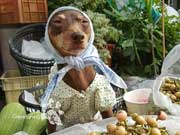 Cute Dog At Fruit Stand Becomes Latest Internet Sensation
Cute Dog At Fruit Stand Becomes Latest Internet Sensation Top 10 livable Chinese cities
Top 10 livable Chinese cities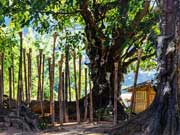 The last primitive tribe in China
The last primitive tribe in China China's first intelligent security robot debuts in Chongqing
China's first intelligent security robot debuts in Chongqing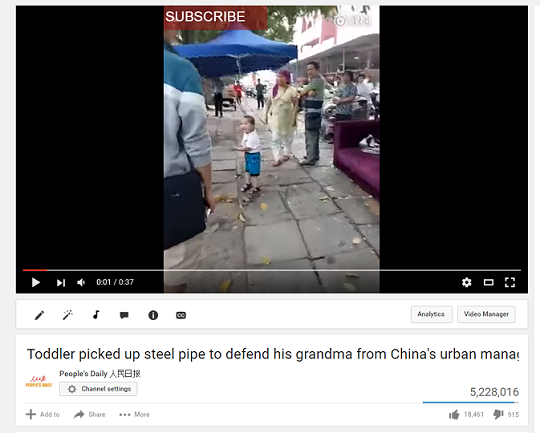 A Total of 3,552 Subscribers Vanish In Two Days; YouTube Closes All Doors to Users’ Inquiries
A Total of 3,552 Subscribers Vanish In Two Days; YouTube Closes All Doors to Users’ Inquiries Out of this world! Futuristic UFO-shaped yacht has its own garden and a stunning underwater viewing deck
Out of this world! Futuristic UFO-shaped yacht has its own garden and a stunning underwater viewing deck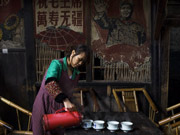 An old tea house in Chengdu
An old tea house in Chengdu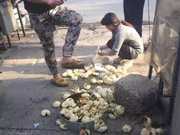 Furious Customer Crushes All the Buns from Vendor Just Because He Was Given the Wrong Flavor
Furious Customer Crushes All the Buns from Vendor Just Because He Was Given the Wrong Flavor